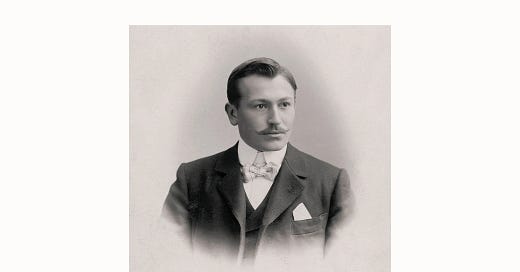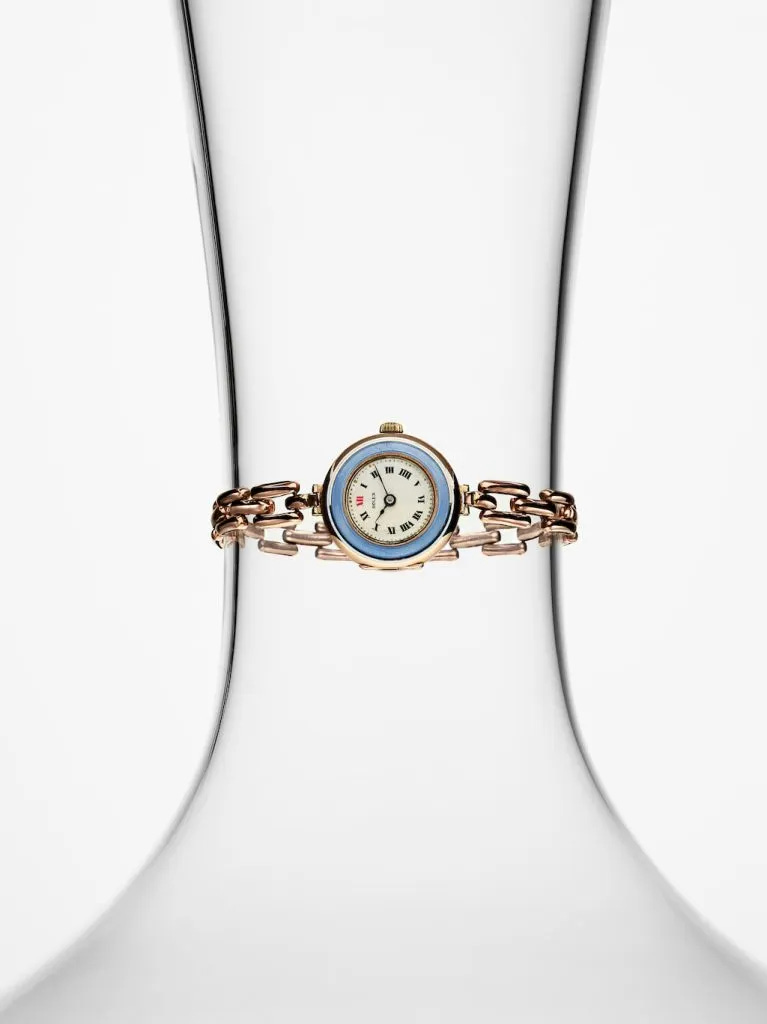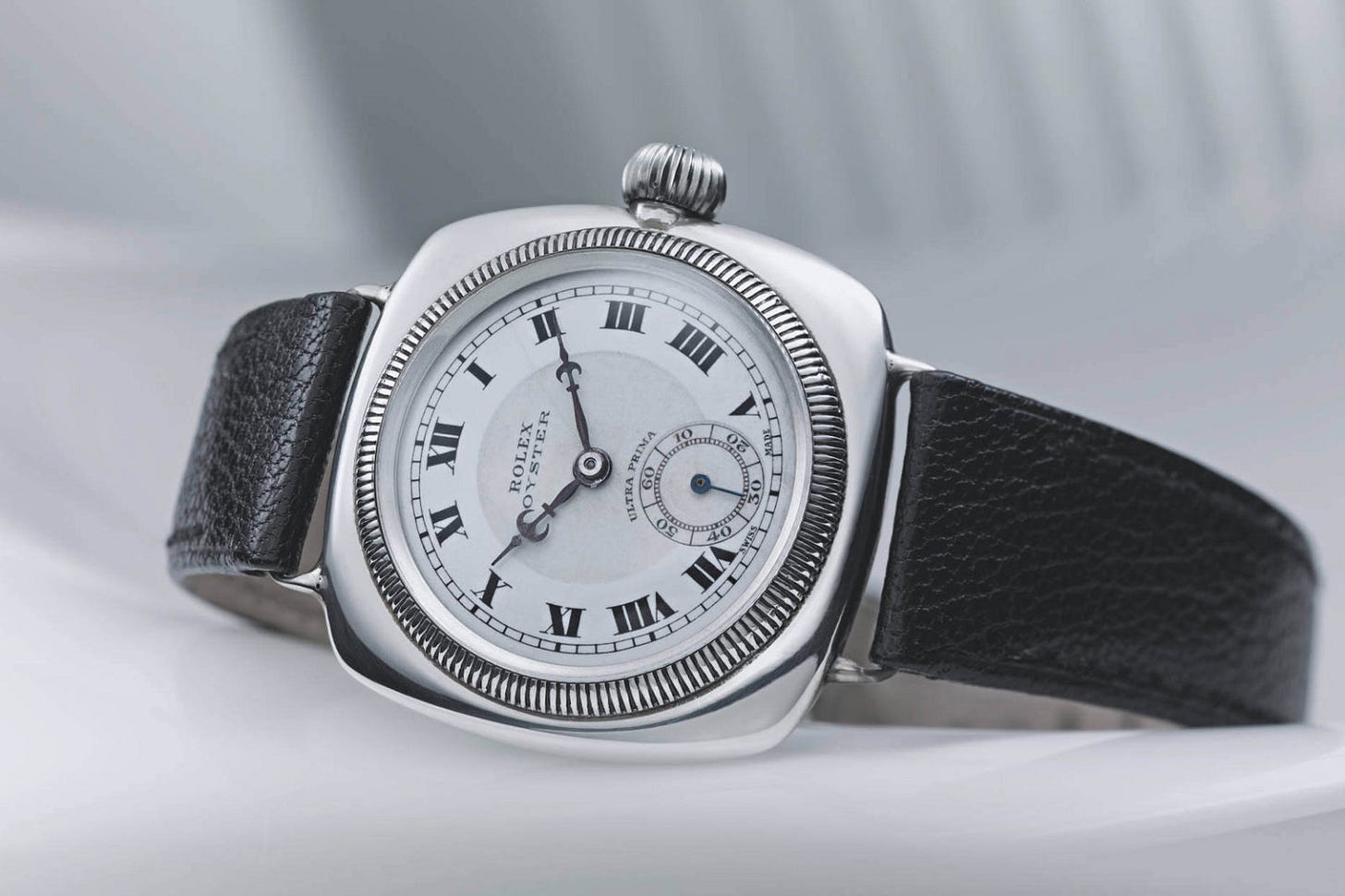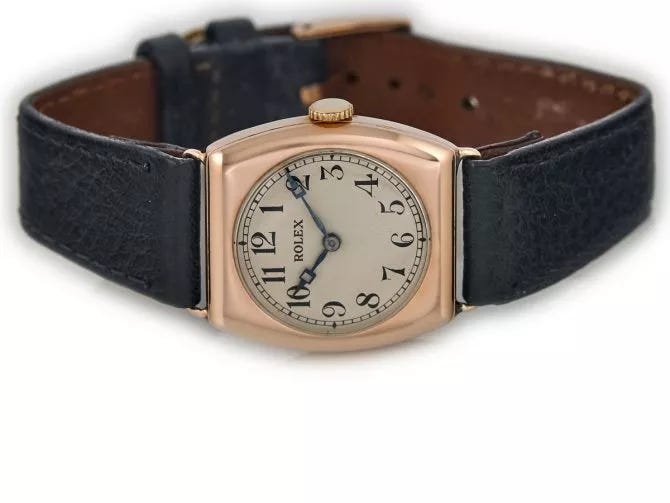This is part 1 of a 3-part series on how the perception of Rolex has changed along its history, please consider subscribing to follow this journey.
The child of Wilsdorf (1905-1919)
To properly begin this series, we ought to give some small history lessons to contextualize each chapter and subsection of this story.
First thing to know is how this behemoth started, and as told by many, from the brand itself to more objective authors, is that in 1905 a young 24-year-old Hans Wilsdorf starts “Wilsdorf & Davis” with his brother-in-law in London, with the objective of selling wristwatches.
A vital context clue here is that at the time of Wilsdorf & Davis founding, wristwatches were mainly a female accesory not focused on precission, but in craftsmanship, but Wilsdorf was aiming to change that, as his store was not only focused on selling watches, but to also put movements in cases to achieve the goal of popularize wristwatches for men.
He kept working on his business venue initially selling womans wristwatches, traditional pocket watches and registering the name “Rolex” in 1908, based on the pseudo portmanteau of the French words “Horólogie d’Expertise”, but oddly enough a global tragedy was about to prove to be Hans lucky break.
World War I proved to be unlucky and bloddy for the world, but for Hans the popularization of wrist-worn “trench watches” helped change the vision of wristwatches from a feminine accessory to a popular male accessory associated with braveness, therefore boosting the demand of the earliest models of Rolex wristwatches.
Add to this the fact that Hans started sending pieces to the Geneva (1910) and Kew (1914) Observatories to compete for precission accolades, while also winning them, helped Rolex to gain an incipient, yet important, reputation for itself, and the public started to notice. Of course, not to the degree of established watch brands at the time like Longines, Patek or, who it would become its eternal rival, Omega, but it was no longer an unknown brand.
A good summary to this phase could be:
“It’s a good and reliable watch, but is not a Longines”
So to a certain point, we can assume or extrapolate that the public perception of Rolex at the time was “the new kid on the block” trying to find its footing, especially in its early years and with such an innovative proposal of a watch that can be worn on the wrist; while trying everything to be perceived as a “serious” watchmaker, not only based on its accolades at the Kew and Geneva Observatories, but by establishing a proper presence at the heart of watchmaking, establishing a factory in Geneva in 1919.
The footing was established; Hans had the cases, movements chronometry accolades and patents; the perception was becoming positive.
Now Hans started moving its marketing and R&D departments so a crown can be forged…
Mythbusting:
Rolex boasts that his Geneva observatory certification “in 1910, was the first wristwatch in the world to receive the Swiss Certificate of Chronometric Precision, granted by the Official Watch Rating Centre in Bienne”; even though I couldn’t find something to contradict this, it is reasonably unlikely, and highly suspicious that Rolex was THE first COSC (or its equivalent) certified wtristwatch in history.
Marketing meets engineering (1920-1930)
With its foothold established in Switzerland, Hans proceeded to expand the brand little by little by introducing newer models according to the tastes of the time, obviously generating modest success as he continued to produce watches and investing in R&D.
Mind you this last statement is not based on proper hard evidence like patents, but in the fact that if it wasn’t for this modest success Rolex wouldn’t have managed to produce its most seminal piece in 1926, the Rolex “Oyster”, a watch that to this day is part of Rolex identity and sat precedent in the watch industry thanks to the screw-down crown.
Here the “Not a Longines, but a good watch” shorthand was starting to show how being constant can get you, but it does not completely pay for the R&D and the patent office, Hans had to think bigger, present itself to a bigger audience.
Firstly, introducing Tudor, also in 1926, the sister brand of Rolex, to be more affordable without sacrificing the quality, as the R&D costs are significantly lowered when you use of “off the shelf” movements and already produced cases, therefore helping sales a lot, due to the lower cost of entry.
But second, and most important, marketing and stunts were at his disposition, and he knew how, as in the previous decades the Kew and Geneva observatory trials, were not only an assurance of quality to the public, but obviously a marketing stunt, a proper and good one based on tangible evidence, but one nevertheless, and so Hans decided to turn his attention towards sports and feats.
Enter the famous, at the time, swimmer Mercedes Gleitze and a stunt to cement the name Rolex on the minds of the masses, the crossing of the English channel be Ms. Gleitze wearing a specially made for her Rolex Oyster to be worn around her neck, the stunt worked as the watch kept working and keeping good time, and the Daily Mail reported the success of the little time keeping machine.
The perception changed again, now Rolex was not simply “A good watch, but not a Longines”, it was:
“The watch that crossed the Channel”,
“A watch that can withstand water due to its sheer engineering and quality”
“A watch for sports”
Needless to say, this made Hans a very happy and wealthy man and opened the doors for Rolex to be considered something bigger, but strangely not enough to beat the big ones that had been longer at the table.
Rolex had a seat in the council, but it was not part of it, yet still took his seat, and kept cooking, while the 30s were approaching.
Mythbusting:
Rolex did not create the first waterproof wirstwatch, that was either the Waltham/ Depollier Field & Marine “THERMO” or, according to more recent findings the Tavannes Watch Co. Submarine both listed to be in propper existance since at least 1916, and the former watch being ordered by the US signal corps in 1918,
Rolex neither created the first automatic wristwatch, it was patented and created by John Harwood in 1922, patented in 1924, used in its own designs/brands until Fortis bought the patent in 1926 and proceeded to mass produce them, Rolex produced what we would consider the “standard” form of the automatic watch as we know it today, but did not create it.
Rolex “innovation” lies in the fact of a screw-down crown in the case, while integrating it with an automatic counter-weighted movement in a single package, an innovation of convenience/integration, not an innovation of creation.
The Rolex crossing attempt, called the “Vindication Attempt” by Gleitze failed due to adverse weather conditions that caused her to dip (pun partially intended) out of it, Rolex was not present at the first successful attempt that took 15 hours.
Now after the early success in chronometry, sports and an interesting spin-off in Tudor, the crown was about to enter its hayday and take the steps to become the icon we know today, but for that we’ll have to wait for part 2 next Sunday.
Links & Sources:
Bobs Watches - About Rolex. Link: https://www.bobswatches.com/about-rolex.html#:~:text=The%20Early%20Years%3A%201905%2D1920&text=At%20the%20time%2C%20wristwatches%20were,appeal%20to%20a%20wider%20audience.
Calibre - Rolex Through the Ages by Sarah Jayne Potter. Link: https://www.watches-of-switzerland.co.uk/calibre/in-depth/rolex-through-the-ages
Prestige - How Rolex shaped the world’s perception of the wristwatch’s place, purpose and potential by Alysson Klass. Link: https://www.prestigeonline.com/sg/watches/how-rolex-shaped-the-worlds-perception-of-the-wristwatchs-place-purpose-and-potential/
Wynn and Thayne - The Complete In-Depth History of Rolex. Link: https://wynnandthayne.com/blogs/news/time-honoured-the-in-depth-history-of-rolex?srsltid=AfmBOopGpva9ZPwhbkFwfzra_ehFeQ5qlIUBi_5YRCkAKE-zfSWOHNIh
Rolex - Early Years: 1905-1919. Link: https://www.rolex.com/about-rolex/history/1905-1919
Oracle Time - History of the World’s First Automatic Wristwatch by Sam Kessler. Link: https://oracleoftime.com/history-of-the-worlds-first-automatic-wristwatch/
Oracle Time - The History of Waterproof Watches by Alan Seymour. Link: https://oracleoftime.com/the-history-of-waterproof-watches/
Medium - 1919 Waltham Depollier Field & Marine “THERMO” the first waterproof watch has finally been found. by Watch Angles. Link: https://medium.com/watchmakers-ch/1919-waltham-depollier-thermo-the-first-waterproof-watch-has-finally-been-found-8ff3aa9220ad
Monochrome - A Technical Perspective A Comprehensive History of the Automatic Watch by Xavier Markl. Link: https://monochrome-watches.com/history-automatic-watch-first-automatic-pocket-watch-first-automatic-wristwatch-technical-perspective/
Time Files - Rolex: Remembering and Fact-checking the First Ever Chronometer Certified Wristwatch by “Alex” Link: https://timefiles.ch/post/remembering-and-fact-checking-the-first-ever-chronometer-certified-wristwatc/
Timepiece Bank - Focus on Watch brand: The History Of Tudor Link: https://www.timepiecebank.com/fr/blog/focus-on-watch-brand-the-history-of-tudor
Time + Tide - Mythbusting four Rolex myths, from The Great Escape, to the English Channel to British Columbia by Luke Benedictus Link: https://timeandtidewatches.com/rolex-myths-from-everest-to-the-great-escape-to-the-english-channel/
As always….








